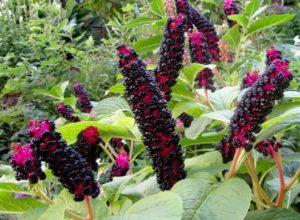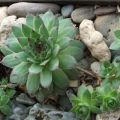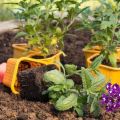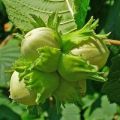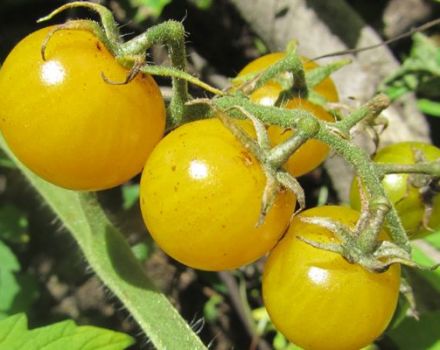Planting and caring for juveniles in the open field, reproduction and rearing
Rejuvenated - an ideal plant for a sunny area with infertile soil. He has several popular names: stone rose, thunderbolt, hare cabbage, tenacious, fat woman. Planting and caring for the young in the open field is not difficult, since it is very unpretentious. It is an ideal plant for beginner gardeners.
General description of the bush
Rejuvenated refers to perennial ground cover succulents. It has a rosette structure of fleshy leaves. Their diameter varies from 1 to 20 centimeters. Leaves are dense, glabrous or pubescent with glandular hairs. The fibrous rhizome is located in the upper soil layer.
The leaf plate, depending on the variety, is painted in different colors: green, silver, red-burgundy. Younger flowers bloom in June-August, have a delicate aroma. Reproduction is carried out by children, which the plant can throw at a distance of about 1 meter.
Varieties and varieties rejuvenated
The main species of rejuvenated species that exist in nature:
- Roofing. Plants are spherical or slightly flattened in shape, the diameter of the rosettes is 4-15 centimeters. It begins to bloom from mid-July to late August.
- Russian. The diameter of the plant is up to 6 centimeters. Inflorescences are yellow, grow up to 35 centimeters.
- Cobweb. The name of this species was rejuvenated for the glandular hairs that envelop a small (up to 4 centimeters in diameter) rosette.
- Marble. Plant rosettes reach 10 centimeters. Young leaf plates are slightly pubescent; the color at the base is green, smoothly turning into red.
- Spherical. The leaf plates are young, oblong-spatulate, collected in a socket, the size of which is 5 centimeters.
- Caucasian. In height, the leaves of the plant reach 20 centimeters, the width of the rosette is 5 centimeters. The inflorescences are lilac-purple in color.
The most popular varieties are young:
- Pharaoh. The height of the rosette is 10 centimeters, the leaf plates are purple, with small flashes of green.
- A princess. The plant has tightly closed leaves with dark brown tips.
- Montana. The rosettes were young and large, their color is bright green.
- Julia. At first, the leaf plates of the bushes have a swamp color, which changes to red by autumn.
- Ed. The peculiarity of the planting is in small red outlets.
Note! After the buds have dried, the flower arrow must be removed, otherwise the rosette may die because of it.
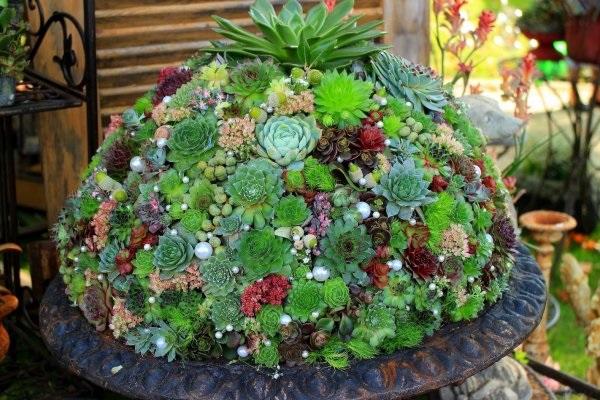
Cultivation rules
In order for the plants to grow quickly and look decorative at the same time, you must initially choose the right place and soil for them, and take care of the bushes during the season.
Selection and preparation of a landing site
Rejuvenated - a light-loving plant, so the planting site should be well lit. In the shade, leaf plates lose their brightness and attractiveness. They planted it on the site from March to October. The stone rose must have time to take root before the onset of frost. She takes root easily, quickly builds up numerous offspring.
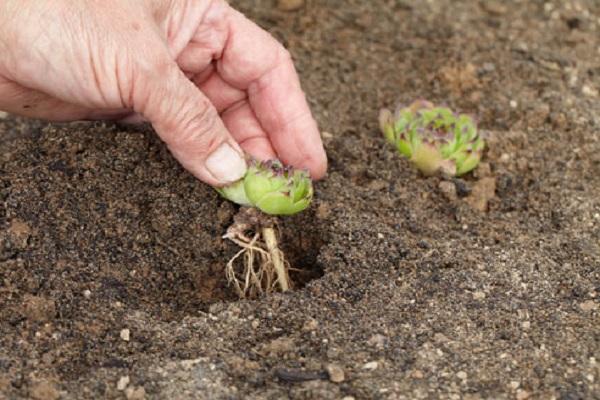
What soil is needed for a stone rose
The root system of the plant is superficial, so the substrate is selected loose, with a predominance of sand. In too heavy and wet soil, the roots can rot. Rejuvenated will more easily endure drought than excessive moisture. For this reason, drainage is laid out in the landing pit, consisting of broken shards, expanded clay, small pebbles, and sand. If the bush is planted in a pot, then a substrate for cactus crops is acquired.
Planting process
The flower is planted in open ground as follows:
- a landing pit is dug;
- drainage is laid out on its bottom;
- loose soil is poured on top;
- seedlings are set in the middle of the hole, covered with the remaining soil.
If several bushes are planted, the distance between young specimens is maintained in the range of 5-7 centimeters, for older ones - 10-12 centimeters. The plantings are watered immediately, then again after 3 days.
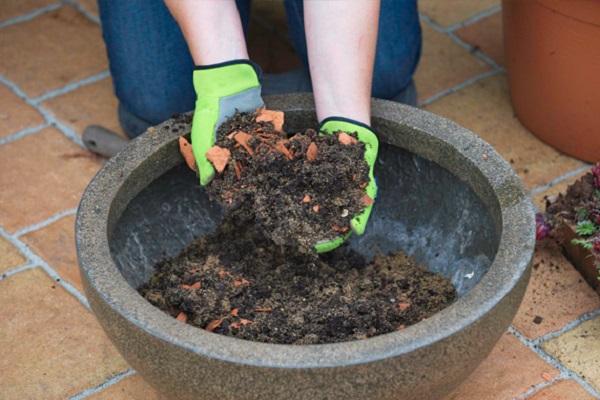
How to care for a young man?
Caring for the plant does not present much difficulty. It is quite unpretentious, but for its spectacular appearance it is necessary to fulfill the requirements. Rare watering, gentle loosening, removal of weeds and faded buds - these procedures will benefit the planting.
Watering rules
The leaves were young, fat, storing moisture. For this reason, the plant does not need frequent and abundant watering. Rainfall during the season is enough for him. With excessive watering, the plantation can be affected by fungal diseases.
Advice! The stone rose does not require frequent watering, so it is recommended to grow it in garden plots that are rarely visited by summer residents, as well as in regions that belong to the zone of risky farming.

Fertilization and feeding
Fertilization rejuvenated - not a mandatory procedure. Only adult plants can be fed - once a season, in spring. For this, fertilizer is taken for succulents in a dose that is half that for the rest of the plantings. Overly fed bushes may not survive the frosty winter.
How does culture winters?
The rejuvenated is able to endure large frosts without loss. The danger of wintering rejuvenated in the garden arises only due to the ingress of moisture between the leaf plates. With frequent thaws, the snow will melt, leaving water droplets in the stomata. Because of this, the plant can be affected by rot, due to which leaf rosettes will die. To prevent this, when winter comes, they cover the young.
Large plastic bottles are used for cover. They are cut off, and the rosettes are covered with youth. So that the covering material is not blown away by the wind, it is fixed with metal studs. So that young plants can successfully winter, they are covered with spruce branches.
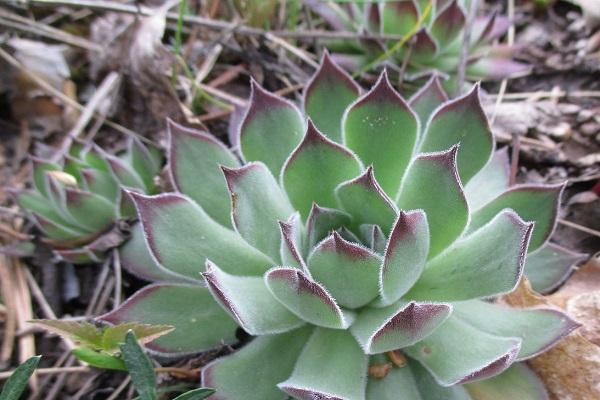
Diseases and insect pests
Rejuvenated can get sick due to improper care, namely, too frequent watering. The plant begins to rot, infecting nearby bushes. To avoid this, the affected plantings are removed from the flower bed. The land on which the diseased grew young should be sprayed with a fungicide.
Birds can damage the plantings. They peck young, weakly adhering bushes, and scatter them around the site.In addition to birds, beetle larvae harm plantings. Pests are removed from the flower bed manually, the plants are re-rooted.
Also, aphid colonies can stick around a stone rose, which will suck juice from the plant. Rejuvenated will gradually begin to wither for a long time. Mealybug works in a similar way. To get rid of pests, the bushes are sprayed with an insecticide.
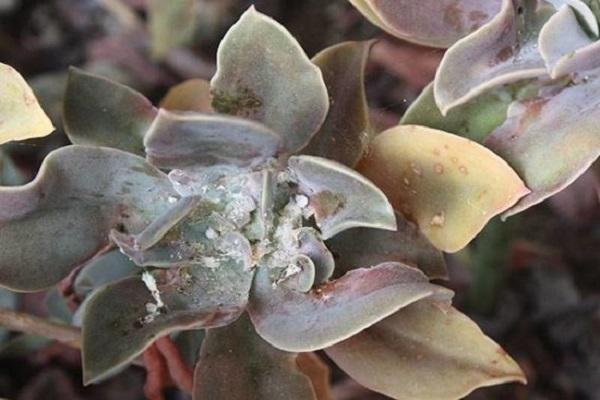
Breeding technology
You can propagate the young by seeds, cuttings and children.
Seeds
You need to sow seeds immediately after collecting them at your site or purchasing them at a flower shop. The fresher they are, the faster they sprout and take root. Preparation and breeding of rejuvenated seeds is carried out as follows:
- Drainage is laid out at the bottom of the planting box.
- The ground for succulents wakes up from above.
- Seeds are sown in rows, at a distance of 4 centimeters from one another. They do not need to be covered with soil.
- The seed is sprayed from the spray gun.
- The box is covered with foil to create greenhouse conditions.
After about 10 days, the first shoots will appear. After that, the film is removed, the seedlings are provided with constant care. If necessary, they are thinned out to provide sufficient feeding area. When the bushes grow up, they can be planted in open ground or in a pot.
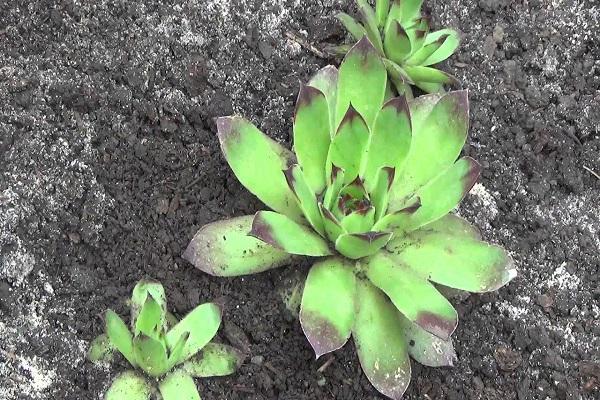
Cuttings
In this case, cuttings are leaf plates that are separated from the outlet, and after planting, they grow roots, turning into independent plants. The procedure for propagation by cuttings is as follows:
- Sheet plates are cut with a sharp disinfected knife.
- The sections are powdered with charcoal. This procedure will prevent them from rotting.
- Cuttings are placed to dry for 2 weeks in a dry place.
- Each sheet is planted in a box with wet sand, covered with foil.
The seedlings are ventilated every day and, as necessary, watered. Care must be taken that the sand is not constantly wet. When roots and young rosettes are formed, the plants are planted in a permanent place.
Important! Cuttings after cutting are not planted immediately, but are left for 2 weeks in a dry place to dry.
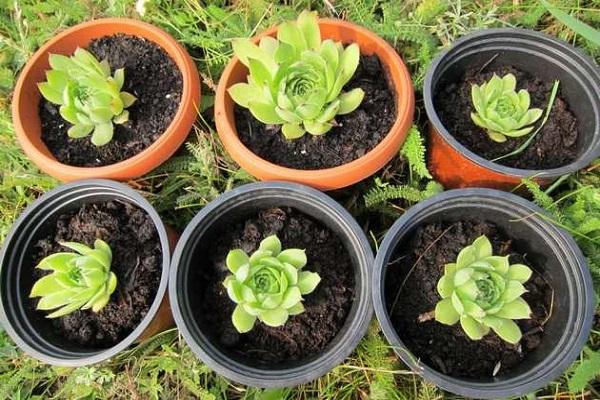
Children and mustache
The rejuvenated around itself forms young plants, which are called babies. For reproduction, they are separated with a sharp knife along with the root, which is dusted with a growth stimulator before planting. Children are planted in a place well-lit by the sun.
Instead of babies, some varieties of stone roses form stems with a vegetative bud at the end, which are called whiskers. So that they can take root faster, they are pressed to the ground, pinned, sprinkled with a substrate around them, watered. Soon the mustache will form roots, after which it is separated and transplanted to a permanent place.
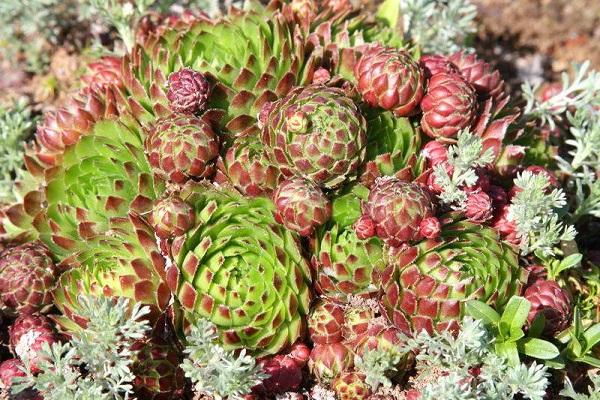
Rejuvenated: combination with other plants
The stone rose is loved by landscape designers for its beauty, unpretentiousness, and drought resistance. It can be planted on an alpine slide, in a rockery, along a garden path. Rejuvenated is used as a carpet, planting next to several varieties of plants of various colors.
In addition, the bushes are combined with other drought-resistant plants: stonecrop, saxifrage, duchenea, arabis, purslane. Some gardeners plant it like a roof covering on a doghouse or gazebo, after having installed a special garden net on the roof. Also, mini-gardens on snags are made of them, planted in pots and pots.

